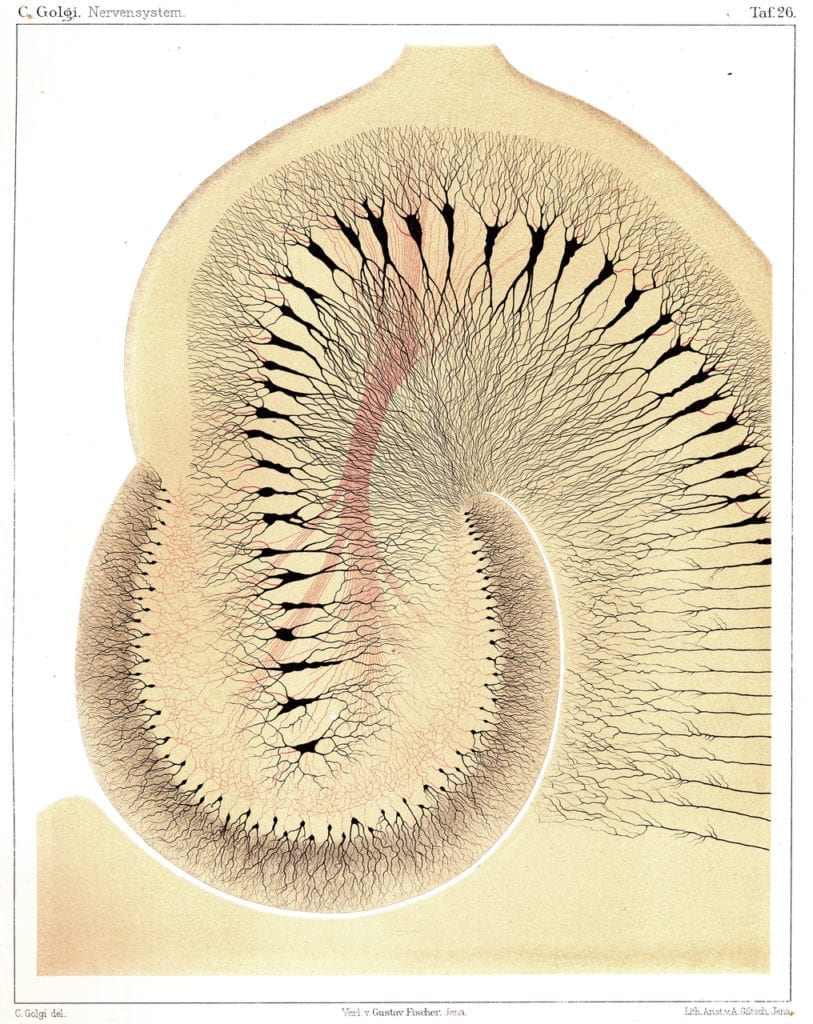Camillo Golgi (1843 –1926) was an Italian biologist and pathologist, now recognized as the greatest neuroscientist of his time. He studied and worked at the University of Pavia, where he developed a technique of using potassium dichromate and silver nitrate to stain cellular components black. Using this stain he was able to discover the organelle now known as the Golgi apparatus, consisting of a collection of flattened membrane-enclosed discs concerned with packaging proteins into vesicles that fulfill various functions within the cells of the nervous system.
In 1886 Golgi published a book on the central nervous system. It contained drawings of structures such as the “foot” of the hippocampus, showing the complex branching and connection of the nerve cells, particularly illustrating the nerve fibers in relation to the ganglia.
 |
| Nerve Cells from Sulla fina anatomia delgi organi centrali del sistema nervosa by Camillo Golgi. 1886. Credit: The Hagstromer Medical Library. |
Highlighted Vignette Volume 13, Issue 1 – Winter 2021

Leave a Reply